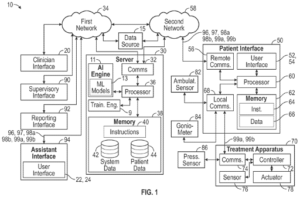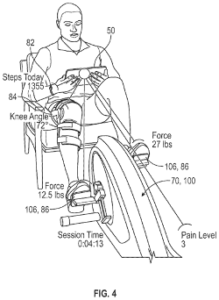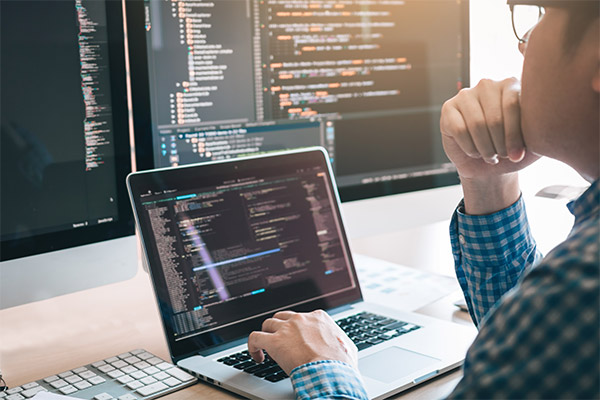Inventors in the artificial intelligence (AI) space should understand intellectual property rights associated with AI. Appropriately protecting your AI or machine learning invention using intellectual property is essential to ensure that you are adequately compensated for developing the invention.
Although a patent attorney is not required to prepare and file a patent application, it is highly recommended to use the services of a patent attorney. The average approval rate of a utility patent application by the USPTO from 2011-2020 is 52.8%. This low approval rate highlights the difficulty in receiving a granted patent and the necessity of using a patent attorney.
Note: Artificial intelligence encompasses the theory and development of computer systems to perform tasks that normally require human intelligence to accomplish. Machine learning is a subset within AI which utilizes algorithms and statistical models that allow the system to learn and adapt without following explicit directions.
This article examines how the patent system applies to AI and machine learning patents.
Understanding AI and Machine Learning Patents
The eligibility criteria for an AI or machine learning patent is the same as for other utility patents. Eligibility criteria for a patent includes subject matter, novelty, nonobvious, and usefulness.
An invention for AI or machine learning incorporates software and the patent will be akin to other software patents.
Subject Matter Eligibility
To be eligible for a utility patent the invention must be either a process, machine, manufacture, or composition of matter.
Although executing software code in and of itself can be considered a process, courts have closely scrutinized how the subject matter eligibility criteria applies to software.
Even if an invention falls under a subject matter eligible category it may not be subject matter eligible if it is considered a judicial exception. Judicial exceptions include abstract ideas, laws of nature, and natural phenomena.
The Supreme Court of the United States reasoned that because abstract ideas, laws of nature, and natural phenomenon “are the basic tools of scientific and technological work”, monopolizing these tools by granting patent rights may impede innovation rather than promote it.
The claims of the patent must not be directed to a judicial exception unless “the claim as a whole includes additional limitations amounting to significantly more than the exception.”
Applying this rationale to software patents, courts have held that simply implementing a mathematical principle on a computer is not a patentable application of that principle.
For an AI or machine learning invention to overcome this judicial exception it must have a real-world application.
Novelty
The invention must be novel, meaning new and never having been done before. Get familiar with the term “prior art” before you begin the application process.
Prior art is any published literature describing any part of your claimed invention. Patent examiners spend a lot of their time searching through databases to find prior art. You may not obtain a patent on anything that exists in the prior art. Prior art includes patents, patent applications, non-patent literature, and anything else that is publicly available.
Nonobvious
The invention must not be obvious. Obvious to whom? The United States Patent and Trademark Office (USPTO) uses a standard called a Person Having Ordinary Skill In The Art (PHOSITA).
If a PHOSITA would find the invention obvious, then it is not eligible for a patent. What a PHOSITA would find obvious varies with the art category and is subject to some debate.
A PHOSITA in the art of AI and machine learning would likely be a computer scientist or engineer.
Useful
The invention must be useful. This is a low bar to meet, nearly anything can be considered useful.
Examples
Consider the following examples to better understand how the eligibility criteria apply to AI and machine learning inventions.
Here is a patent that was granted in 2022 for an invention that uses AI and machine learning. This AI invention is for a Method and system for using artificial intelligence and machine learning to provide recommendations to a healthcare provider in or near real-time during a telemedicine session.
Viewing these two patent images together demonstrates how this patent applicant overcame any subject matter eligibility issues with the judicial exceptions.


Figure 1 is a block diagram illustrating the overarching process of implementing the AI and machine learning algorithm. This process on its own might not be considered subject matter eligible as an abstract idea. Tying the process to the machine in a telemedicine session gives the process a clear and concrete real-world application.
The novelty of this invention was determined by the patent examiner while examining the patent application. The examiner searched relevant databases and did not find this invention, as claimed, anywhere else in the prior art.
The examiner was unable to make a reasonable argument that this invention was obvious. This invention also has a clear usefulness.
Overcoming all these eligibility requirements allowed the patent application to issue as a granted patent.
Here are some other examples of AI and machine learning patents. Follow the links to view the patent.
- Unified nonlinear modeling approach for machine learning and artificial intelligence (attractor assisted AI)
- Determining context and intent in omnichannel communications using machine learning based artificial intelligence (AI) techniques
- Artificial intelligence system for supporting communication
- Systems and methods for intelligently curating machine learning training data and improving machine learning model performance
- Compression in machine learning and deep learning processing
- Methods and apparatus for machine learning predictions of manufacturing processes
While developing your AI and machine learning invention be sure to consider the real-world application of your invention. To receive a granted patent you need to be able to describe the application of the AI or machine learning.
AI Patent Attorney Services
A patent attorney advises and represents their clients in patent related matters. Services patent attorneys provide include the following.
- Consultations
- Conducting patentability searches
- Authoring patentability opinions
- Preparing and filing patent applications
- Prosecuting patent applications
- IP Portfolio management
- Licensing and negotiations
- Patent litigation and enforcement
An inventor’s relationship with their patent attorney typically starts with an initial consultation. The patent attorney will gather information about your invention and situation to determine the next best course of action. Review this article for questions you should ask your patent attorney. Ask your patent attorney about their experience with AI and machine learning inventions.
It is common practice for a patent attorney to perform a patentability search before preparing and filing the patent application. The attorney will search for prior art that may be used to deny your patent. This research can be used to write a patentability opinion and draft a patent application to ensure it avoids claiming anything that already exists.
Preparing a patent application involves gathering various information about the invention and inventor, writing a specification which describes the invention in detail, drafting strong claims, preparing drawings, and filling out the appropriate forms.
After filing the patent application, the attorney is responsible for corresponding with the USPTO regarding the application. The patent examiner assigned to your application will be well versed in AI and machine learning.
The USPTO will issue an office action either rejecting and/or objecting to the application. Patent prosecution refers to the attorney working with the USPTO to make appropriate changes and get the application in a condition for approval.
Patent attorneys also offer services after a patent is granted. A patent attorney can assist with negotiating and drafting patent license agreements, managing your portfolio of patents, writing cease and desist letters, and representing patent owners in infringement lawsuits.
Pros and Cons of Hiring an AI Patent Attorney
Very much like in a criminal trial where the defendant is allowed to represent themselves, an individual inventor can file and prosecute their own patent application. However, with so much at stake it is almost always worth it to pay an experienced attorney to represent you.
Pros of Hiring an AI Patent Attorney
Prosecuting patent application is not an easy task, with the average approval rate of a utility patent application by the USPTO from 2011-2020 at 52.8%. The best way for an inventor to increase the likelihood of receiving a granted patent is to use the services of a patent attorney.
A patent attorney has demonstrated competency of the patent system by passing the patent bar and making it through the USPTO vetting process. A patent attorney can take over all aspects of the patent application process and provide you with peace of mind.
Pros of hiring an AI Patent Attorney:
- More likely to receive a granted patent.
- Save time learning the complex process of patent prosecution.
- Allocate legal responsibility of the application to a professional.
- Have someone who can answer your questions.
- Peace of mind.
- Attorney can assist with other auxiliary legal needs.
Cons of Hiring an AI Patent Attorney
The biggest drawback of hiring a patent attorney is the high cost of attorney’s fees. Additionally, there is no guarantee that you will receive a granted patent even if you hire a patent attorney. Inventors must weigh their own financial situation against the benefits of patent protection when considering if hiring a patent attorney is worth it.
Cons of hiring an AI Patent Attorney:
- High costs may outweigh benefits.
- No guarantee of receiving a granted patent.
- Patent attorneys are still humans and can make mistakes.
DIY Filing Tips for AI and Machine Learning Patents
Preparing and filing one’s own patent application is not recommended and will likely lead to sub optimal results. Nevertheless, many inventors are the DIY type and prefer to tackle the process themselves.
The most comprehensive resource to assist you along the way is the Manual of Patent Examining Procedure. The MPEP is regularly updated with any changes to the patent system.
Start by writing out a detailed description of your invention. Attempt to fully flesh out every aspect of your invention with words. Add to this description as you go through the process of preparing the patent application.
From there begin to conduct prior art research. Follow the USPTO recommended multi-step patent search strategy. Review the prior art against your invention. Ask yourself honestly “is my invention novel” and “is my invention just an obvious improvement of what already exists.”
Identify what subject matter category your invention falls under. Is it a process, machine, manufacture, composition of matter, or a combination of these categories?
If you believe your invention is patentable and want to proceed, download the application submission form, and begin preparing your application in that document. Navigate to the USPTO website here. Download the appropriate DOCX Template. Sections you may have to provide information for include the following.
- Reference to related applications
- Related applications
- Cross-references
- Reference to related patents
- Statement of government interest
- Rights to invention under federal research
- Federally sponsored research and development
- Government interest
- Government rights in the invention
- Federal funds statement
- Statement as to rights to inventions made under federally sponsored research and development
- Origin of the invention
- Federally sponsored rights
- Statement of federally sponsored research
- Acknowledgment of government support
- Background of the invention
- Description
- Statement of the invention
- Summary of the invention
- Object of the invention
- Field of the invention
- Technical field of the invention
- Prior art
- Description of related art
- Description of drawings
- Joint research agreements
- Best mode for carrying out the invention
- Detailed description
- Claims
- Abstract
- Drawings
It is imperative that all the required information is accurate and included in the patent application document. If certain information is missing it may lead to the loss of intellectual property rights. At this point, a DIY inventor may realize that the cost of hiring a patent attorney is worth it.
Those brave enough to continue need to complete all the required sections in the application document. Patent drawings must meet certain requirements. Many patent attorneys hire people who are well versed in CAD software to prepare these drawings.
The claims define the metes and bounds of the invention. The claims are of the utmost importance because they define what the patent protects. The form of claims is very nuanced and drafting strong claims can be very difficult.
Inventors may find it helpful to use a publicly available granted patent which is similar to their own invention as the blueprint for their own patent application.
Inventors may also find it helpful to utilize a large language model such as GPT or Bard to generate text for the application. It is important to note that these language models are trained on existing information. All that information is also available for examiners to use as prior art to reject an application. It has not been established yet if the current large language models can write a patent application which differentiates the invention from the prior art.
When you are ready to submit your patent application navigate to the USPTO patent center website. Under the Activities section click on the box that says “New Submission.” Click on the type of patent application you wish to file and use the Web ADS online form. Fill out all the necessary information and upload the application document. After paying the fees and receiving confirmation congratulate yourself. You just filed a patent for your invention!
The USPTO will likely not begin to examine the application until at least 18 months. The USPTO will issue an office action (OA) stating reasons for objection or rejection of the application. You have at least one opportunity to make appropriate changes to the application and resubmit.
If you can successfully overcome the examiners’ rejections and objections the application will enter a state of allowance. You may be required to submit more documents at this point. Once the issue fee is paid the application will issue as a granted patent.
An inventor may decide to manage the process of applying for a patent while hiring a patent attorney as a consultant. If an inventor begins the process and finds themselves overwhelmed, they can always hire a patent attorney to take over the case.
Sheldon Brown
Sheldon received his training of the patent system at the United States Patent & Trademark Office. He works with universities and consultants to provide analytics and guidance for technology commercialization from patents.

Patent Lawyer Menu
Talk with a Patent Attorney
Get a free consultation from a patent attorney and protect your invention.
Sources:
- N.A. (2021, May 1) U.S. Patent Statistics Chart Calendar Years 1963-2020. Retrieved from https://www.uspto.gov/web/offices/ac/ido/oeip/taf/us_stat.htm
